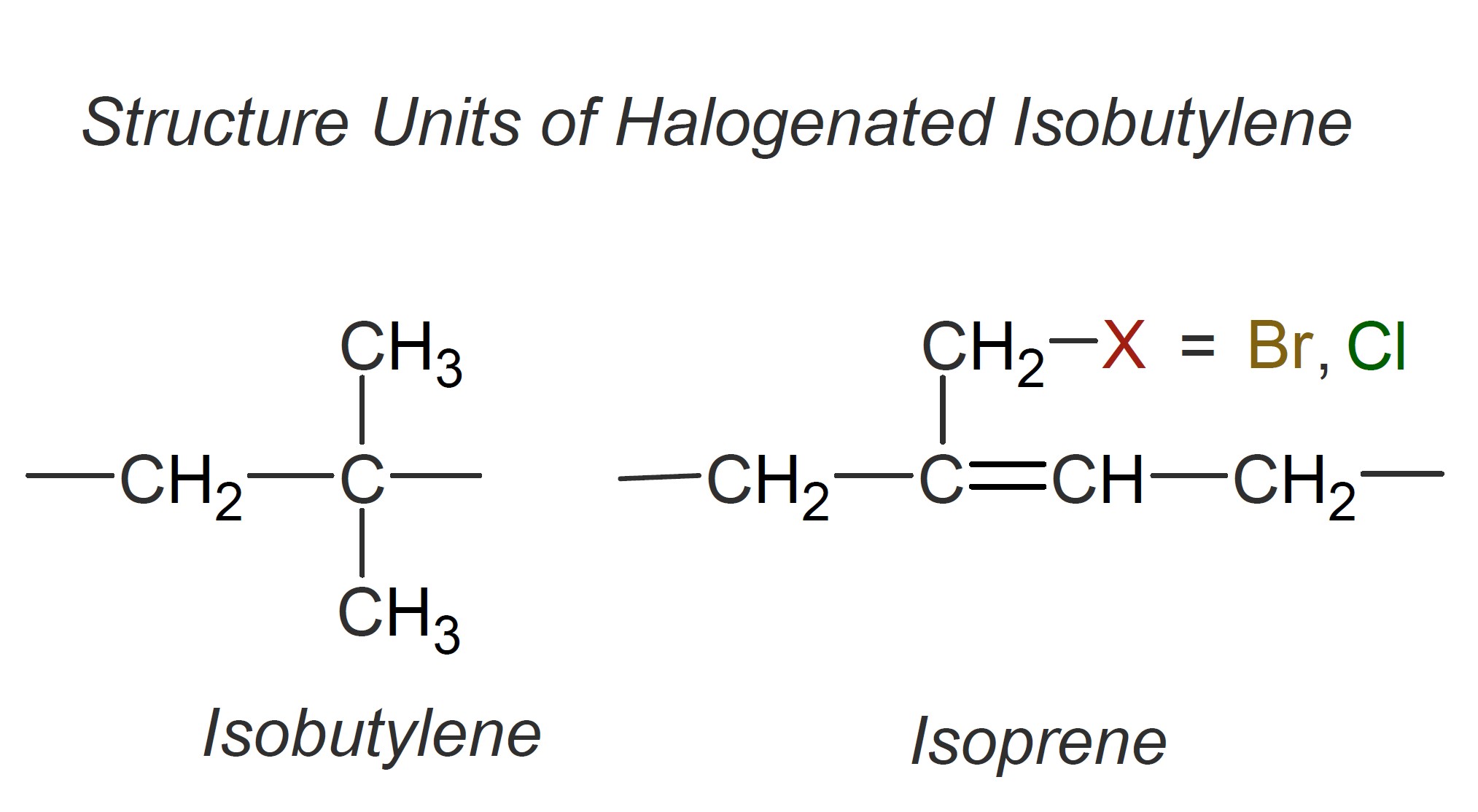Chlorobutyl (CIIR)
Bromobutyl (BIIR)
Properties
Chlorobutyl (CIIR) and bromobutyl (BIIR) elastomers are copolymers of halogenated isobutylene (Cl, Br) and small amounts of isoprene which provides unsaturated sites for vulcanization. The introduction of bromine or chlorine improves the resistance to ozone, weathering, chemicals, and heat. This, however, comes at the expense of electrical insulation and moisture resistance.

Both bromobutyl (BIIR) and chlorobutyl (CIIR) have primarily a saturated backbone of isobutylene. Both elastomers have many of the attributes of ordinary butyl rubber including low gas and moisture permeability, good vibration damping, low glass transition temperature, excellent resistance to ageing and weathering, and wide vulcanization versatility.
The introduction of chlorine or bromine increases adhesion to rubbers, and metals, improves compatibility with diene rubbers in blends, and provides much higher curing rates, i.e. a lower amount of curative is required. Furthermore, halogenated butyl can be co-vulcanized with general purpose high-unsaturation elastomers, such as natural rubber, polybutadiene, and styrene-butadiene rubber, while maintaining the mostly saturated backbone structure.
Both halogenated rubbers have very similar properties. Chlorine, however, increases the reactivity of the cure sites resulting in faster cure and improved adhesion to unsaturated elastomers.
COMMERCIAL Products
The main manufacturers of halogenated butyl rubbers are Lanxess and Exxon Mobile.
Applications
Both butyl and halobutyl rubbers provide excellent inflation pressure retention. They are an ideal choice for inner tubes of bicycles, trucks, and industrial and agricultural tires. In fact, halogenated butyl rubbers are the most widely used butyl rubbers for tire inner liners. Halobutyl rubbers are also used for hoses, seals, membranes, tank linings, conveyor belts, protective clothing and for consumer products, such as ball bladders for sporting goods. Halobutyls are generally a good choice when good resistance to chemicals, weathering, and ozone is required.